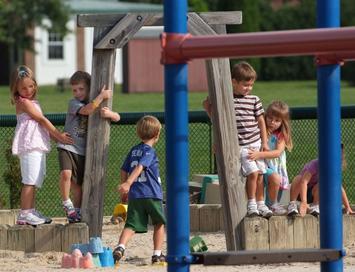
With a stronger economy and a growing number of women of child-bearing age, Americans should be producing offspring at a healthy clip. But the most recent data suggest that this is not happening, as the birthrate in 2015 dropped to a historic low. A new study from the University of New Hampshire suggests that these trends have resulted in 3.4 million fewer births since 2008, based on the pre-recession fertility rate, or roughly 15 percent fewer births than would have occurred at the 2007 birth rate.
Once an exception to demographic decline, our country may be falling into the dismal pattern that is now common in other high-income countries, notably in East Asia and Europe. Europe’s demographic crisis is one reason European Union officials, particularly in Germany, opened the floodgates to mass migration from the Middle East and other unstable areas. In many parts of Europe, more people are dying than are being born.
Now America may be joining the downward fertility spiral. Since the recession, the number of new children has plummeted, and it’s dropped the most precipitously for new mothers. The number of households with their own children in 2014 was 33 million, down from 35 million in 2005, even as the total number of households has shot up by nearly 6 million. By comparison, there are about 43 million households with dogs, according to the ASPCA’s low-end estimate.
Shifts in child bearing will profoundly affect our geography, politics and economic future. Children, after all, define our future society, and provide the primary motivation for parents and grandparents. Without a strong familial structure, we will be facing a rather grim future, as an expanding older population grows ever more dependent on a shrinking base of young working-age people. Demographer Sami Karam notes that the 1980s Reagan boom benefited from demographics of that period, with a rising proportion of working people to retirees. With trends headed the opposite way, he suggests, no such expansion may even be possible today.
To some, of course, an increasingly childless future represents something of an ideal. Many greens regard offspring as unwanted additional emitters of carbon, and historically have proposed limiting families. It also provides manna to those high-density developers who no longer will have to worry about renters seeking to establish themselves in homes best suited for raising children.
Read the entire piece at The Orange County Register.
Joel Kotkin is executive editor of NewGeography.com. He is the Roger Hobbs Distinguished Fellow in Urban Studies at Chapman University and executive director of the Houston-based Center for Opportunity Urbanism. His newest book, The Human City: Urbanism for the rest of us, will be published in April by Agate. He is also author of The New Class Conflict, The City: A Global History, and The Next Hundred Million: America in 2050. He lives in Orange County, CA.













The Obvious Solutions
The Generation Y "boomlet" peak birth year was 1990. The average age of mother at first birth is around 26 years (and rising). If you add 26 (to 30) years to 1990 you come up with an estimate for the next boom in new mothers: 2016-2020.
Given how slow the recovery is progressing, the odds of another boom are pretty low, but the statistics still predict a recovery in total birth rate. Not much of one, though.
Considering that productivity is still relatively flat, and that America still refuses to tax the wealthy to pay for the expenses we incur, odds are that the population growth (needed to pay the bulk of new taxes for the next 60 years) will be comprised largely of immigrants.
The idea that America can pay back debt just by encouraging millennials to work harder seems pretty silly, once you think about it.
Immigrants are the answer
Open Borders!
Let everyone in.
Immigrants made America Great.
Dave Barnes
+1.303.744.9024